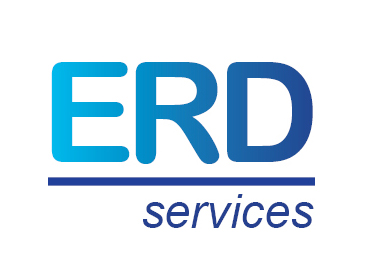What is HCL Tech Up to with Its IP Strategy?
HCL Tech released last month its Q1 FY19 results. Growth for the whole company was 9.5% yoy at CC, and at CC/CS 7.5% (estimate). HCL Tech is going through a transition year, with CC/CS growth slowing down, and recent bookings expected to accelerate growth the end of the year. The guidance of the firm reflects this CC/CS revenue growth slowdown: HCL expects CC revenue growth for FY19 to be in the range of 9.5%-11.0%, with one half of the growth coming from acquisitions, and the other half being organic.
ERS drives the growth of HCL Tech
More than ever, ERS, HCL Tech’s engineering and R&D services unit, continues to be the driver of the firm and has been since Q3 FY17 (calendar Q4 2016). The unit crossed in Q1 FY19 the USD 500m revenue threshold, and has added approximately USD 175m in quarterly revenues since Q3 FY17. HCL’s ERS unit is now #3 globally by revenues, close to # 2 Alten. In all likelihood, HCL will overtake Alten in 2019, even if Alten itself is also a success story.
The economics of the partnership is unclear
The success of ERS is first and foremost related to the IP partnership strategy of HCL Tech, which has brought, on average, 2000 bps in additional revenue growth to ERS. HCL Tech has been buying ten-year software product rights (mostly from IBM, and to a lesser extent from Cisco, JDA Software, and DXC), and enhances them. ERS bills the ISV for this product development activity. The economics of the IP partnership is not entirely clear from both HCL’s and IBM’s perspectives.
For the IBM/ISV point of view, IP partnerships (with HCL, and also with Tech Mahindra and Aricent) bring upfront payments. Then IBM pays to HCL ER&D charges. What does it make sense for IBM to have upfront payments and quarterly expenses? Is there an element of R&D tax credit that is applicable in the US ? Whatever the rationale for IBM to license its IP, this must be a profitable business.
From an HCL perspective, HCL makes several phases payments to IBM, gets ER&D revenues, and shares some license revenues with IBM from selling the product. Like for IBM, the economics are difficult to understand, although HCL reported for its mode three business, an EBIT margin of 27%.
How large can HCL growth its IP business?
One thing is clear: HCL wants to build a sizable ISV business. How big? HCL Tech has not provided further information on its scaling ambitions. As of Q1 FY19, IP or mode three revenues accounted for approximately 11% of its revenues or about USD 227m. Examples from competitors suggest that 20% to 30% probably is the right range. CGI, the Canadian IT services firm, which is known for its emphasis on IP, currently derives approximately 22% of revenues from IP. Sopra, the French IT services vendor, wants to reach 20% by 2020.
HCL Tech’s IP business includes a variety of different assets
Along its IP partnerships and acquisitions, HCL Tech has assembled a broad portfolio of software products and IP. The portfolio ranges from application security (IBM) to collaboration applications (in all likelihood Cisco), mainframe middleware and mainframe application modernization (IBM), data-related software (Actian with Ingres and IBM with Sybase), marketing applications (JDA in all likelihood, and IBM for its WebSphere product), and core banking application (from DXC/CSC).
This is a wide portfolio! At this stage, HCL Tech seems to have had an opportunistic approach, rather than a strategy to build a consistent and comprehensive portfolio. Also, 40% of its IP portfolio is digital (e.g., security, ecommerce, cloud, automation and AI), and the remaining 60% comprises mature software products. HCL Tech is therefore not shy of buying mature technology and also competiting technologies.
The product invesment takes up to 24 months
The priority of HCL with these acquired IPs is to refresh them. The company relies on relies on creating a backlog of client request during its initial catch-up phase. Then it enhances the products, and finally moves on to product modernization (e.g., SaaS-ify the product, bring AI capabilities) after 12 to 24 months.
Along with this investment in the product, HCL Tech is rebanding it (it recently launched HCL Informix), and starts selling the IPs, as part of managed services contracts, reflecting a focus on selling solutions combining software and services.
We reiterate: this is a bold strategy
It is reassuring to see that HCL Tech is following a very structured way of building its mode three business. Still, questions remain: by far, this is the fastest softwre product ramp-up I have seen in the industry. It raises many questions: does it make sense to have a series of IP, rather than one consistent set of products? How will the seasonality of software product sales impact HCL Tech as a whole? And last and final question: what will happen to the ERS business once the product software software ramps down?
